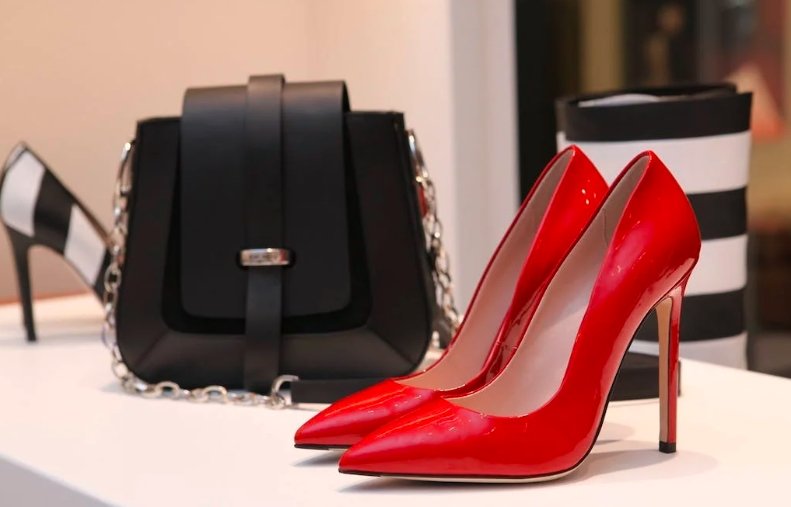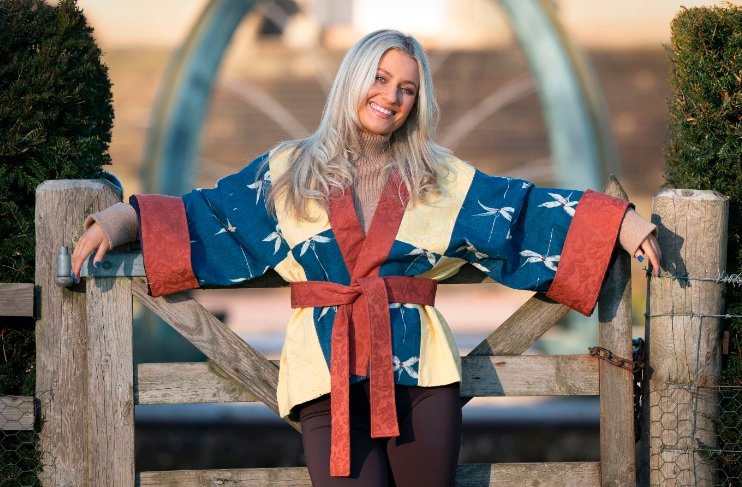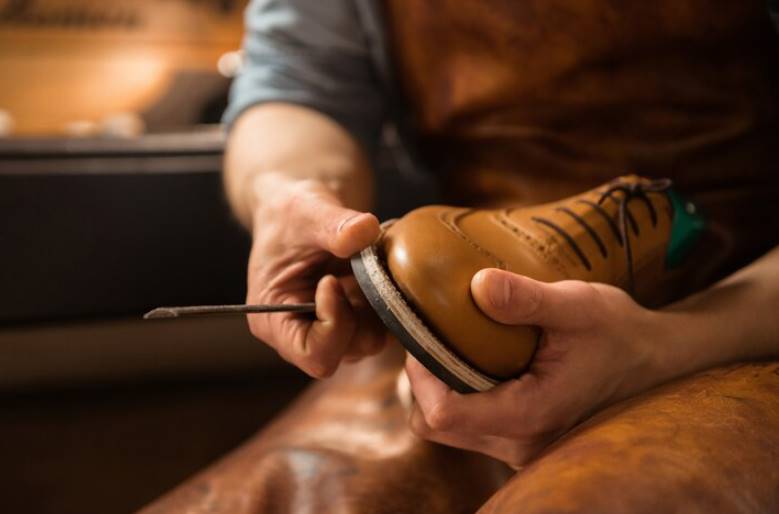Footwear and shoes have been a staple in human fashion since the dawn of civilization. From the earliest sandals used by the ancient Egyptians, to the modern day high-tech sneakers, humans have used footwear for a variety of purposes. Whether it’s for protection from the elements or for dressing up an outfit, footwear has been an ever-present part of our lives.
Today, the variety of footwear and shoes available to us is staggering. From the classic leather brogues to the ultra-modern running shoes, there is a shoe to fit any occasion. However, it is important to choose the right type of shoe for your needs and activities. Wearing the wrong type of footwear can lead to discomfort, pain, and even long-term injuries. That’s why it’s important to take the time and do your research before purchasing a new pair of shoes. That’s where Sole Searching: A Guide to the Best Footwear and Shoes comes in. This comprehensive guide will provide you with information about the types of shoes available, their features and benefits, and tips on how to choose the right shoe for your needs. Whether you’re looking for a comfortable pair of casual shoes for everyday wear or a pair of rugged boots for outdoor activities, Sole Searching will help you make the right decision.
Factors to Consider Before Choosing Footwear and Shoes:
Comfort: Comfort is the foremost factor to consider before choosing the right pair of footwear. It is important to make sure that the footwear fits well, is lightweight, and has cushioning properties to provide the required support and comfort to the feet. Additionally, the materials used in the footwear should be breathable to keep the feet cool and comfortable.
Size and Fit: The size and fit of the footwear should be taken into consideration before making a purchase. The right size and fit are essential to ensure maximum comfort and protection for the feet. It is important to measure the feet and select the appropriate size for optimal comfort. In addition, the fit should be snug, but not too tight to ensure that the feet are not restricted.

Arch Support: Proper arch support is essential to provide the needed support for the feet. It is important to check for the arch support in the footwear to ensure that it provides the necessary support and stability to the feet.
Material Quality: The material quality of the footwear should be taken into consideration before making a purchase. It is important to check for the quality of the materials used in the footwear to ensure that it is durable and long-lasting. Additionally, the materials should be breathable and provide the necessary support and comfort to the feet.
Breathability: Breathability is an important factor to consider when choosing the right pair of footwear. It is important to make sure that the materials used in the footwear are breathable to keep the feet cool and comfortable. Additionally, the breathability of the materials ensures that the feet do not get sweaty and smelly.
Durability: Durability is an important factor to consider when selecting the right pair of footwear. It is important to check for the quality of the materials used in the footwear to ensure that it is durable and long-lasting. Additionally, the footwear should be designed for maximum protection and durability to ensure that it lasts for a long time.
Style and Design: Style and design are important factors to consider when selecting the right pair of footwear. It is important to check for the style and design of the footwear to ensure that it is fashionable and stylish. Additionally, the style and design should be chosen to complement the outfit and reflect the individual’s personality.
Types of Footwear and Shoes:
Athletic Shoes: Athletic shoes are designed for sports and other forms of physical exercise. They are usually lightweight, flexible, and have good cushioning to provide support, stability, and shock absorption. Athletic shoes usually have rubber soles, but some have all-leather or partial-leather soles. They can also have features like breathability and waterproofing to help keep feet cool and dry during activities.
Casual Shoes: Casual shoes are those that can be worn in everyday life. They are typically made from canvas, leather, or synthetic materials and come in various styles, such as loafers, moccasins, boat shoes, sneakers, and more. Casual shoes are perfect for activities like shopping, going out to eat, or even a casual night out.
Dress Shoes: Dress shoes are more formal than casual shoes and are typically made from leather. They come in various styles, such as oxfords, loafers, slip-ons, monk straps, and wingtips. Dress shoes are usually worn with dressier outfits and are considered appropriate for more formal occasions.
Boots: Boots are a type of footwear that covers the foot and ankle and can be made from a variety of materials, such as leather, suede, rubber, or canvas. They come in various styles, such as ankle boots, Chelsea boots, combat boots, hiking boots, and motorcycle boots. Boots are typically designed for protection and durability and are perfect for outdoor activities.
Sandals: Sandals are a type of open-toed footwear that usually feature a strap or two that goes around the foot to hold the shoe in place. They can be made from various materials, such as leather, rubber, canvas, or synthetic materials. Sandals are perfect for warm weather and are often worn to the beach or pool.
Slippers: Slippers are a type of footwear that is designed to be worn indoors. They are usually made from fabric or synthetic materials and are designed to be lightweight and comfortable. Slippers are often worn around the house to keep feet warm and to avoid tracking dirt or debris on floors.
Best Footwear and Shoes for Different Occasions:
Running Shoes for Athletes
Running shoes are designed with the specific needs of athletes in mind. They are designed to provide cushioning, stability, and traction for running activities. They are also designed to provide support and protection to the feet, ankles, and lower legs. They come in a variety of colors and styles, and can be customized to fit the individual’s needs. They are often made from lightweight, breathable materials, such as mesh, and are designed to last through many miles of running.
Business Shoes for Professionals
Business shoes are designed to be stylish, yet professional. They are typically made from leather, and come in a variety of colors and styles. These shoes provide comfort and protection for the feet, while still keeping the look professional. They are often designed with a tapered toe, and can be dressy or casual, depending on the occasion. They are also designed to last through many hours of standing, walking, and climbing.
Hiking Shoes for Outdoor Enthusiasts
Hiking shoes are designed to provide comfort, traction, and protection for those who enjoy spending time outdoors. They are usually made from leather and mesh, and are designed to keep the foot dry and comfortable while hiking. They come in a variety of colors and styles, and are designed to withstand the wear and tear of outdoor activities. They are also designed with a higher arch, providing extra support and stability while walking on uneven terrain.
Beach Sandals for Vacationers
Beach sandals are designed to provide comfort and protection for those who spend time on the beach. They are often made from a combination of leather and mesh, and come in a variety of colors and styles. They are designed to be lightweight, breathable, and comfortable, while also providing protection from sand, rocks, and other debris. They are also designed to be worn in water, and are often treated with special water-resistant materials to prevent water damage.
Sneakers for Casual Wear
Sneakers are designed to provide comfort and style for everyday wear. They are usually made from lightweight, breathable materials, such as mesh, and come in a variety of colors and styles. They are designed to provide cushioning, stability, and traction for walking and running activities. They are also designed to be supportive and protective, while still keeping the look casual and stylish.
How to Take Care of Footwear and Shoes:
Cleaning and Maintenance:
It is important to take proper care and maintenance of your footwear and shoes. Cleaning your footwear regularly is the key to keeping them looking like new. Before cleaning the shoes, make sure they are completely dry to avoid any damage. Use a soft-bristled brush or a damp cloth to gently scrub the shoes. Use a shoe cleaner or a mild detergent to remove stubborn stains. Brush the shoes gently with a soft-bristled brush or a damp cloth. Allow the shoes to air dry in a cool place.
Storage Tips:
Storing your shoes properly is essential to keep them in good condition. Store your shoes in a cool, dry place. Avoid storing them in direct sunlight, as this can cause fading and discoloration. Use shoe trees or shoe bags to absorb moisture and keep the shoes in shape. Be sure to empty the shoes of any objects, such as stones or dirt, before storing them. Additionally, avoid stacking heavy items on top of the shoes to prevent crushing.
Avoiding Common Mistakes:
It is important to follow the proper procedures when taking care of your footwear and shoes. Do not machine wash your shoes, as this can cause damage. Avoid using harsh chemicals and abrasive materials to clean your shoes. Do not leave them in direct sunlight, as this can cause fading and discoloration. Additionally, avoid using heat to dry your shoes, as this can cause them to become brittle. Finally, do not use shoe polish or wax on patent leather shoes, as this can cause damage.
Frequently Asked Questions about Footwear and Shoes:
What is the best material for shoes?
The best material for shoes depends on the purpose for which you are wearing them. Generally, for more casual shoes, leather is the most comfortable and long-lasting material. For more active shoes, synthetic materials like mesh and polyester are best. They are generally lightweight and breathable, so they are ideal for activities where you will be sweating and your feet will be getting hot. The choice of material also depends on personal preference.

How often should I replace my shoes?
The frequency of shoe replacement will depend on the type of activities you are engaging in and the material of the shoes. Generally, shoes should be replaced every 500-700 miles if you are a runner. For casual and everyday wear, it is recommended to replace your shoes every six months to a year. It is important to keep an eye on the wear and tear of your shoes, as well as any discomfort or pain in your feet, as this could indicate that it is time for a new pair of shoes.
Can I wear the same shoes for different activities?
It is not recommended to wear the same shoes for different activities. Shoes are designed for specific activities and wearing them for activities for which they are not designed can cause discomfort and even injury. For example, running shoes are designed to be lightweight and flexible, and wearing them for a casual walk will not provide adequate support. It is always best to invest in the right type of shoes for the activity you are engaging in.
What is the difference between walking and running shoes?
The main difference between walking and running shoes is the level of cushioning and support they offer. Running shoes are designed to be lightweight and flexible, providing cushioning and shock absorption to reduce the impact of running on your joints. Walking shoes, on the other hand, are designed to provide more support, as they are generally heavier and more rigid.
How can I break in new shoes?
Breaking in new shoes can be a process, but there are some steps you can take to make it easier. Firstly, it is important to purchase a pair of shoes that fits correctly. If the shoes are too loose, it can cause blisters and chafing. Secondly, you can wear the shoes for short periods of time and gradually increase the duration. It is also beneficial to wear socks that are designed to provide extra cushioning and arch support. Lastly, you can also try stretching the shoes with a shoe stretcher or by applying a small amount of leather conditioner.
Conclusion
Sole searching for the perfect pair of shoes or boots can be a daunting task, but with a little research, patience, and a willingness to invest in quality, you can find the perfect pair of footwear that fits your needs and your lifestyle. By understanding the different types of materials, designs, and features available, you can find the right pair that suits your needs and preferences. Whether you’re a runner, a dancer, a hiker, or just a fashionista, there’s a pair of shoes or boots out there that can make your life more comfortable and stylish. By investing in quality, you can be sure that your feet are supported and protected, so you can live your life in comfort and confidence.
FAQs
1. What are the best shoes for running?
The best shoes for running depend on the individual runner’s foot type and running style. Some popular running shoe brands include Brooks, Mizuno, Asics, and Nike.
2. Where can I find good quality shoes at an affordable price?
Online stores like Amazon and Ebay often have the best prices on shoes. You can also find good quality shoes at discount stores like Target, Walmart, and department stores like Macy’s and Nordstrom.
3. What are the best shoes for standing all day?
The best shoes for standing all day are those that provide ample cushioning and support. Look for shoes with a thicker sole, cushioned arch support, and a padded insole. Shoes with a slip-resistant sole are also a good option.
4. What are the best shoes for walking?
The best shoes for walking are those that provide a comfortable fit and plenty of support. Look for shoes with motion-control technology, cushioning, and a flexible sole. Shoes with a wide toe box are also recommended for those with wide feet.
5. What are the best shoes for hiking?
The best shoes for hiking are those that provide comfort and support. Look for shoes with a supportive sole, waterproof material, and good traction. Shoes with a higher ankle support are also a good option for more challenging hikes.
6. What are the best shoes for basketball?
The best shoes for basketball are those that provide a snug fit, good traction, and cushioning. Look for shoes with a flexible sole and breathable material. Shoes with a higher ankle support are also recommended.
7. What are the best shoes for golf?
The best shoes for golf are those that provide good traction, support, and stability. Look for shoes with a lightweight design, breathable material, and a waterproof sole. Shoes with a wider heel are also recommended for more stability.
8. What are the best shoes for cross-training?
The best shoes for cross-training are those that provide cushioning, support, and flexibility. Look for shoes with a lightweight design, breathable material, and a flexible sole. Shoes with a wider toe box are also recommended for more comfort.
9. What are the best shoes for walking on concrete?
The best shoes for walking on concrete are those that provide cushioning and support. Look for shoes with a thick sole, cushioned insole, and motion-control technology. Shoes with a slip-resistant sole are also a good option.
10. What are the best shoes for running on trails?
The best shoes for running on trails are those that provide cushioning, stability, and traction. Look for shoes with a flexible sole, waterproof material, and good grip. Shoes with a higher ankle support are also recommended for more challenging trails.


















